Intellectual property theft is a critical issue in today’s increasingly digital world. It involves the unauthorized use, reproduction, or distribution of someone else’s intellectual property (IP), which can encompass a wide range of creations and innovations. Understanding the complexities and implications of intellectual property theft is essential for both individuals and businesses.
Understanding Intellectual Property
Intellectual property refers to the creations of the mind, including inventions, designs, artistic works, and symbols used in commerce. The legal framework surrounding intellectual property provides exclusive rights to creators and inventors, allowing them to control the use of their work and benefit economically from their creativity. This protection is crucial in a world where ideas can be easily replicated and shared, making it essential for individuals and businesses to safeguard their innovations and creations.
Definition and Types of Intellectual Property
There are several key categories of intellectual property:
- Patents: Legal protections granted for new inventions, providing the patent holder exclusive rights for a certain period. Patents can cover a wide range of inventions, from groundbreaking technologies to unique manufacturing processes, and they encourage inventors to disclose their innovations to the public.
- Copyrights: Protects original works of authorship, such as books, music, films, and software, giving creators rights to reproduce and distribute their work. Copyright law fosters a vibrant cultural landscape by ensuring that artists and authors can earn a living from their creations.
- Trademarks: Symbols, words, or phrases legally registered to represent a company or product, safeguarding brand identity in commerce. Trademarks help consumers identify the source of goods and services, thereby enhancing trust and loyalty in brands.
- Trade Secrets: Information, practices, techniques, or processes that are confidential and provide a competitive advantage. Companies often invest significant resources in maintaining trade secrets, as losing this information can lead to a substantial loss of market position.
Each type of intellectual property has its legal parameters and protections, making it imperative for creators and business owners to understand their rights. For instance, while patents require public disclosure of the invention, trade secrets thrive on confidentiality, showcasing the diverse strategies available for protecting intellectual assets.
The Importance of Intellectual Property Rights
IP rights play a fundamental role in fostering innovation and creativity. They incentivize individuals and organizations by ensuring that they can reap the rewards of their inventions. The importance of intellectual property rights can be summarized as follows:
- Encourages creativity by providing a financial incentive for innovation. When creators know they can protect their work, they are more likely to invest time and resources into developing new ideas.
- Protects consumers by ensuring that they receive authentic products and services. Intellectual property rights help to combat counterfeiting and fraud, which can undermine consumer trust.
- Promotes fair competition by ensuring that businesses can differentiate their offerings. This differentiation is crucial in crowded markets, where unique branding and product features can determine success.
- Helps companies build and maintain brand reputation. Strong intellectual property protection allows businesses to cultivate a loyal customer base, as consumers often associate trademarks with quality and reliability.
Through these mechanisms, intellectual property rights contribute significantly to economic growth and social advancement. Moreover, as the global marketplace continues to evolve, the importance of intellectual property becomes even more pronounced, with digital innovations and online commerce presenting new challenges and opportunities for protection. In this context, understanding and navigating the complexities of intellectual property law is essential for anyone looking to thrive in today’s competitive environment.
The Concept of Intellectual Property Theft
Intellectual property theft occurs when individuals or entities exploit someone else’s intellectual property without permission. This violation can lead to substantial financial losses for the original creators. In an increasingly interconnected world, the protection of intellectual property has become more critical than ever, as the ease of sharing and accessing information can blur the lines of ownership.
How Intellectual Property Theft Occurs
Intellectual property theft can manifest in various ways, including:
- Copying patent-protected inventions without authorization.
- Reproducing copyrighted materials, such as music or literature, without the creator’s consent.
- Using trademarked logos or brand names in marketing or products without permission.
- Infringing on trade secrets through espionage or unauthorized access.
With the rise of digital technologies, the avenues for potential IP theft have expanded, making it easier to copy, share, and distribute protected works globally. For instance, the proliferation of online platforms has facilitated the unauthorized distribution of copyrighted content, such as movies and software, often leading to significant revenue losses for creators. Additionally, social media has become a double-edged sword, where the rapid sharing of content can sometimes lead to unintentional infringements, blurring the lines between inspiration and theft.
The Impact of Intellectual Property Theft
The consequences of intellectual property theft are far-reaching. For creators and businesses, the impacts can include:
- Financial loss due to lost sales and compromised business value.
- Damage to brand reputation, leading to loss of consumer trust.
- Increased costs related to legal actions and efforts to mitigate the impacts.
- Stifling of innovation as resources are diverted toward combating theft.
Moreover, intellectual property theft can deter innovation across entire industries, as individuals may become reluctant to invest in creating new products or technologies if the risk of theft is perceived to be high. This chilling effect can result in a stagnation of creativity and technological advancement, as potential inventors weigh the risks against the rewards of their endeavors. The global economy thrives on innovation, and when the incentive to create is undermined, it can lead to a less dynamic market, ultimately affecting consumers who benefit from new products and services.
Legal Framework Around Intellectual Property Theft
The legal response to intellectual property theft consists of various laws and international treaties designed to protect the rights of creators and enforce penalties against infringers. This framework serves not only to safeguard the interests of individual creators but also to foster innovation and economic growth by ensuring that inventors and artists can reap the rewards of their hard work.
International Laws and Treaties
Several critical international agreements shape the landscape of intellectual property law, such as:
- Agreement on Trade-Related Aspects of Intellectual Property Rights (TRIPS): Sets minimum standards for IP protection and enforcement among World Trade Organization (WTO) member countries.
- Berne Convention: Establishes the rights of authors in their literary and artistic works on an international scale.
- Paris Convention for the Protection of Industrial Property: Focuses on protecting industrial property rights such as patents and trademarks across its signatory countries.
These treaties aim to harmonize intellectual property laws across borders and provide a framework for international cooperation in protecting those rights. By creating a unified approach, these agreements help reduce the complexities that arise when dealing with IP issues in a globalized economy. For instance, the TRIPS agreement not only mandates minimum standards for protection but also encourages member countries to adopt more stringent measures that can deter piracy and counterfeiting, thus promoting fair competition.
National Laws and Regulations
Each country has its own specific laws and regulatory frameworks to address intellectual property theft. For example, in the United States, the primary legal instruments include:
- Title 17 of the U.S. Code (Copyright Act)
- Title 35 of the U.S. Code (Patent Act)
- Lanham Act (Trademark Act)
These laws define the rights of creators and the mechanisms for enforcement, including civil suits and criminal penalties for infringement. Businesses and individuals must familiarize themselves with the relevant laws in their jurisdiction to effectively protect their intellectual property. Moreover, the rapid evolution of technology has led to new challenges in IP enforcement, prompting lawmakers to adapt existing regulations and introduce new ones. For instance, the rise of digital media has necessitated stricter regulations surrounding online copyright infringement, leading to the implementation of the Digital Millennium Copyright Act (DMCA) in the U.S., which provides a framework for addressing copyright violations in the digital space.
In addition to statutory laws, judicial interpretations play a crucial role in shaping the enforcement landscape. Courts often set precedents that influence how laws are applied in specific cases, which can lead to significant shifts in the understanding of intellectual property rights. This dynamic interplay between legislation and judicial rulings underscores the importance of staying informed about ongoing legal developments, as they can have profound implications for creators and businesses alike.
Preventing Intellectual Property Theft
Prevention is key in the fight against intellectual property theft. Both individuals and organizations can take proactive steps to protect their creations and innovations.
Measures for Businesses and Individuals
To safeguard intellectual property, businesses and individuals should consider implementing the following measures:
- Registration: Register patents, trademarks, and copyrights to establish legal ownership.
- Nondisclosure Agreements (NDAs): Use NDAs when sharing sensitive business information with partners or employees.
- Employee Training: Educate employees about intellectual property laws and the importance of confidentiality.
- Regular Audits: Conduct periodic audits of IP assets to ensure compliance and identify vulnerabilities.
By putting these measures in place, businesses can create a robust framework to deter potential theft of their intellectual property.
Role of Technology in Prevention
Technology also plays a crucial role in preventing intellectual property theft. Tools such as digital rights management (DRM) and watermarking can help protect copyrighted materials. Additionally, the use of blockchain technology can enhance the traceability and authenticity of IP assets.
Organizations can leverage cybersecurity measures to protect trade secrets and sensitive information from unauthorized access. Regularly updating security protocols can significantly reduce the risk of digital theft.
Dealing with Intellectual Property Theft
Even with preventive measures in place, instances of intellectual property theft may still occur. Knowing how to respond can help mitigate the damage.
Legal Recourse and Remedies
There are several legal avenues available for individuals and businesses that find themselves victims of intellectual property theft:
- Civil Lawsuits: Seeking damages through civil litigation can hold infringers accountable and provide financial restitution.
- Criminal Prosecution: In severe cases, individuals or companies can pursue criminal charges against those committing theft.
- Injunctions: Courts may issue injunctions to prevent further use or distribution of stolen intellectual property.
Consulting with a legal expert specializing in intellectual property law can offer invaluable guidance on the best course of action.
The Role of Law Enforcement Agencies
Law enforcement agencies also play a vital role in addressing intellectual property theft. They work to investigate and prosecute these crimes, collaborating with IP owners to gather evidence and build cases against infringers. Whether through special task forces or partnerships with government agencies, effective enforcement requires a dedicated approach to tackling intellectual property crime.
Conclusion
Intellectual property theft is a pervasive issue that can undermine the efforts and investments of creators and businesses worldwide. Understanding the intricacies of intellectual property, the mechanisms of theft, and the available legal protections are crucial in navigating this complex landscape. By taking proactive measures and knowing how to respond to theft when it occurs, individuals and organizations can safeguard their innovations and contribute to a fair and equitable marketplace.
Computer Packages Inc. (CPI) is a privately owned IP management company with over fifty years of experience serving the IP community. Our mission is to be the most trusted partner in safeguarding clients’ IP assets with innovative IP management software and annuity services. Learn how we specialize in IP patent, trademark, and annuity management by exploring our services.


